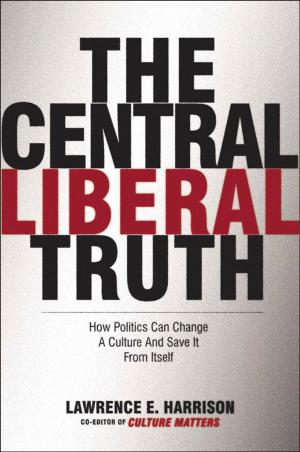Getting Back to Full Employment
A Better Bargain for Working People
Business & Finance, Economics, Macroeconomics, Nonfiction, Social & Cultural Studies, Political Science, Politics, Economic Policy, Government, Public Policy| Author: | Dean Baker, Jared Bernstein | ISBN: | 9780615918365 |
| Publisher: | Center for Economic and Policy Research | Publication: | November 15, 2013 |
| Imprint: | Language: | English |
| Author: | Dean Baker, Jared Bernstein |
| ISBN: | 9780615918365 |
| Publisher: | Center for Economic and Policy Research |
| Publication: | November 15, 2013 |
| Imprint: | |
| Language: | English |
While most people intuitively know that low unemployment is important to job seekers, they may not realize that high levels of employment actually would make an enormous difference in the lives of large segments of the workforce who already have jobs. Particularly in an era of historically high wage and income inequality, many in the workforce depend on full employment labor markets, and the bargaining power it provides, to secure a fair share of the economy's growth. For the bottom third or even half of the wage distribution, high levels of employment are a necessary condition for improving wages, higher incomes, and better working conditions.
This book is a follow-up to a book written a decade ago by the authors, The Benefits of Full Employment (Economic Policy Institute, 2003). It builds on the evidence presented in that book, showing that real wage growth for workers in the bottom half of the income scale is highly dependent on the overall rate of unemployment. In the late 1990s, when the United States saw its first sustained period of low unemployment in more than a quarter century, workers at the middle and bottom of the wage distribution were able to secure substantial gains in real wages. When unemployment rose in the 2001 recession, and again following the collapse of the housing bubble, most workers no longer had the bargaining power to share in the benefits of growth. The book also documents another critical yet often overlooked side effect of full employment: improved fiscal conditions (without mindless budget policies like the current sequestration). Finally, in this volume, unlike the earlier one, the authors present a broad set of policies designed to boost growth and get the unemployment rate down to a level where far more workers have a fighting chance of getting ahead.
While most people intuitively know that low unemployment is important to job seekers, they may not realize that high levels of employment actually would make an enormous difference in the lives of large segments of the workforce who already have jobs. Particularly in an era of historically high wage and income inequality, many in the workforce depend on full employment labor markets, and the bargaining power it provides, to secure a fair share of the economy's growth. For the bottom third or even half of the wage distribution, high levels of employment are a necessary condition for improving wages, higher incomes, and better working conditions.
This book is a follow-up to a book written a decade ago by the authors, The Benefits of Full Employment (Economic Policy Institute, 2003). It builds on the evidence presented in that book, showing that real wage growth for workers in the bottom half of the income scale is highly dependent on the overall rate of unemployment. In the late 1990s, when the United States saw its first sustained period of low unemployment in more than a quarter century, workers at the middle and bottom of the wage distribution were able to secure substantial gains in real wages. When unemployment rose in the 2001 recession, and again following the collapse of the housing bubble, most workers no longer had the bargaining power to share in the benefits of growth. The book also documents another critical yet often overlooked side effect of full employment: improved fiscal conditions (without mindless budget policies like the current sequestration). Finally, in this volume, unlike the earlier one, the authors present a broad set of policies designed to boost growth and get the unemployment rate down to a level where far more workers have a fighting chance of getting ahead.















